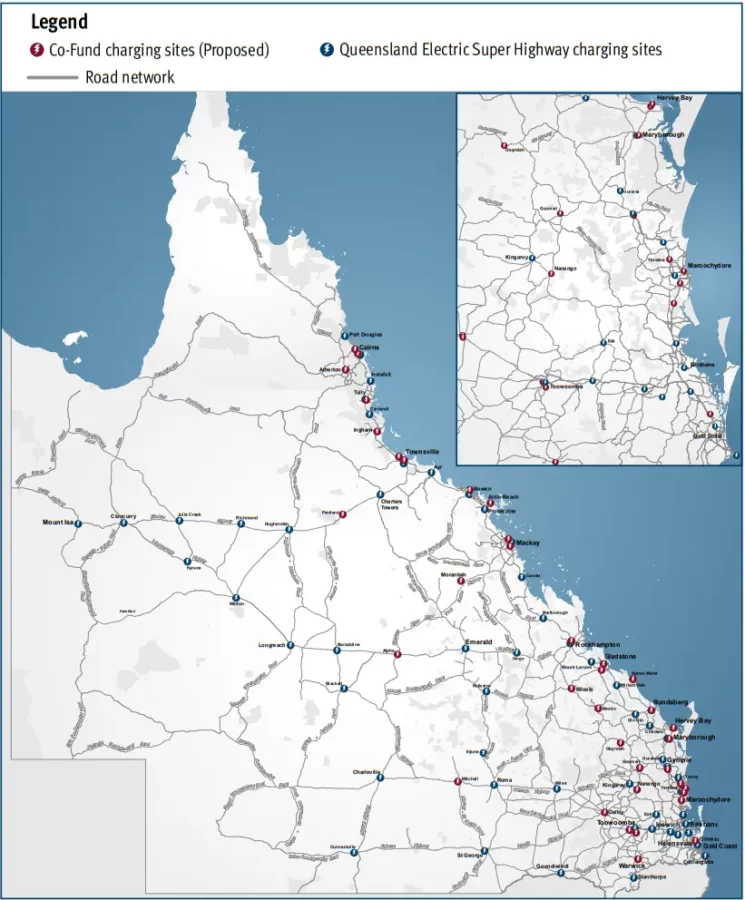Queenland Transport and Main Roads Minister Mark Bailey has revealed the locations of 44 new EV chargers to be delivered around the state, almost doubling the number of government funded EV stations through urban and rural QLD.
More than 30 towns in Queensland will benefit from new EV charging infrastructure, almost doubling the capability of the Queensland Electric Super Highway (click here to see full map details).

Locations of the new fast chargers are listed below, the towns marked with a * will feature multiple sites:
|
|
This is enabled by a $10 million commitment to co-fund charging infrastructure as part of the Queensland government’s $55 million 10-year Zero Emission Vehicle Strategy.
The new stations will increase reliability, reduce queuing, and ensure that EV drivers have confidence in road tripping through regional Queensland.
Construction is set to kick off over the next 18 months with the last charger promised to be up and running by the end of 2024.
The five successful applicants for the government grant money are:
- Fast Cities Australia Pty Ltd (Evie Networks)
- IPAH Client Solutions Australia Pty Ltd (ENGIE)
- National Roads and Motorist’s Association (NRMA)
- Royal Automobile Club of Queensland (RACQ)
- Tesla Motors Australia Pty Ltd (Tesla)
These companies will match funding by the government to deliver the sites.
Some of the government guidelines for applicants to the fund are:
- Charging Sites must be publicly available, so any built by Tesla can be used by any EV not just Tesla owners,
- Charging Sites must utilise 100 percent Renewable Energy for the life of the Charging
Infrastructure, - Utilise plug types at the fast-charging stations which are in accordance with the Federal
Chamber of Automotive Industries (FCAI) technical statements and/or codes of practice. As explained below this could be a poor decision, - Only fast charging infrastructure 75kW – 350kW DC per Charging Bay is eligible. So there won’t be any 50kW chargers,
- Include redundancy in the system (at least one additional 22kW AC plug),
- Depending on the location there is a minimum of either
- 4 Charging plugs rated at a minimum of 75kW DC per bay (IE. 4 Charging
- 2 Charging plugs rated at a minimum of 75kW DC per bay
Unfortunately the requirement to have plugs which are in accordance with the FCAI means there is likely to be a 50%/50% mix of CCS and CHAdeMO plugs available at each location.
If my guess is correct this is a poor decision by the government grant rule makers as CHAdeMO EV’s like the Nissan Leaf are a small percentage of the electric vehicles in Australia and this percentage is dropping further over time.
It would have been far better to require that each location has to have 1 CHAdeMO plug and the rest can be CCS.

Where will non Tesla owners charge
Probably at the growing number of 3rd party chargers and the vast majority will charge at home.
It says these are to be suitable for other vehicles as well and agree chadeMo should be limited to one